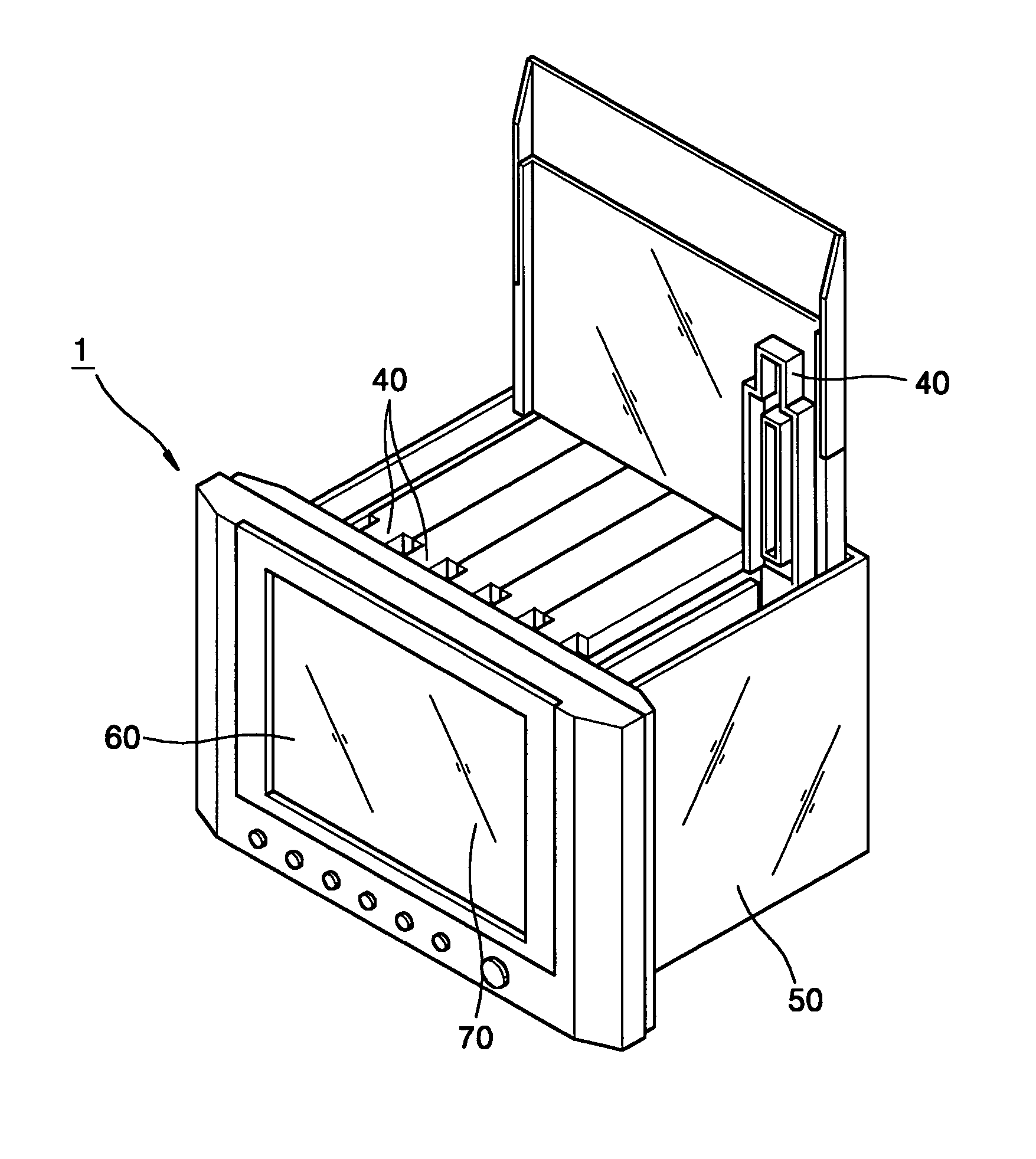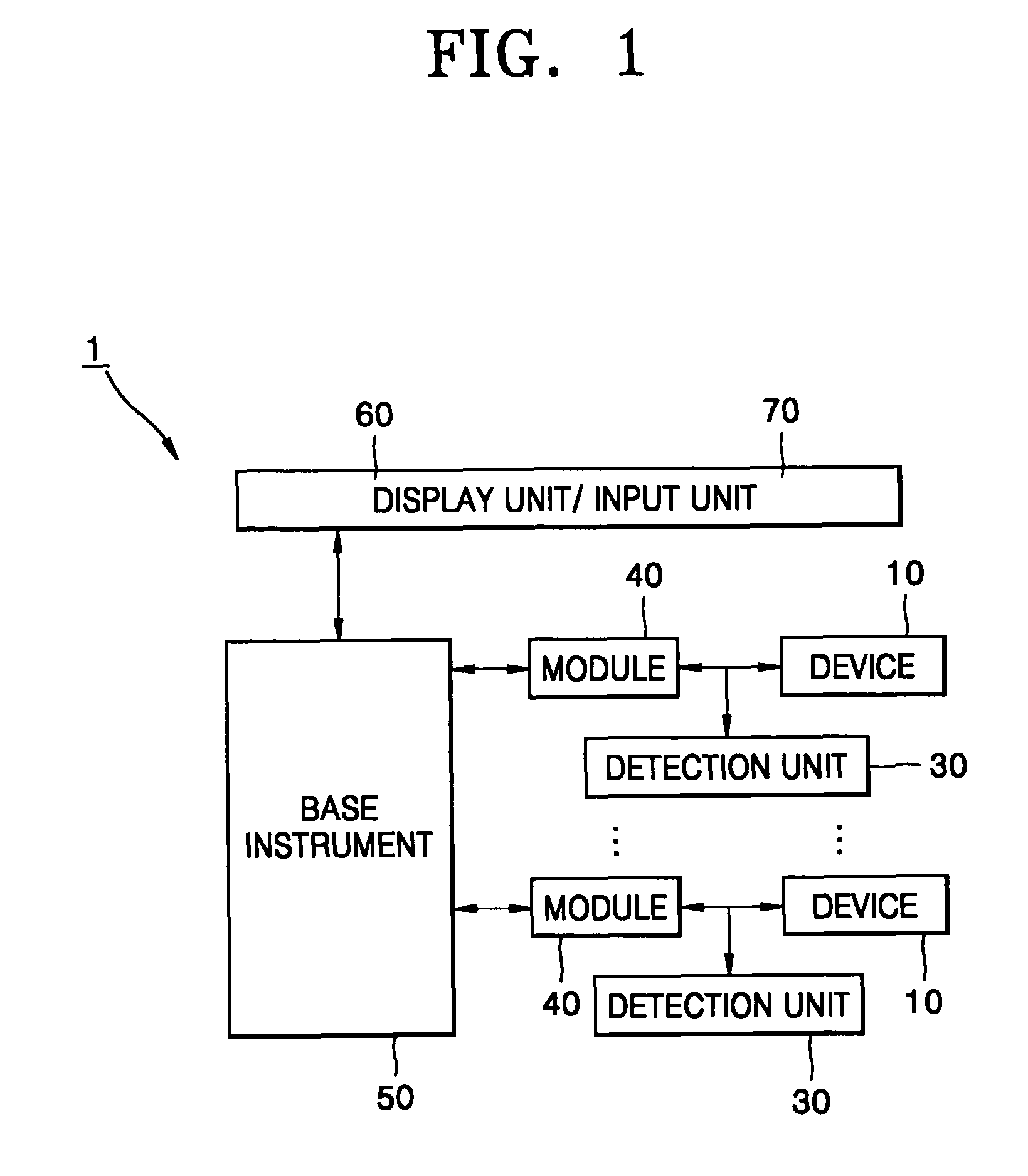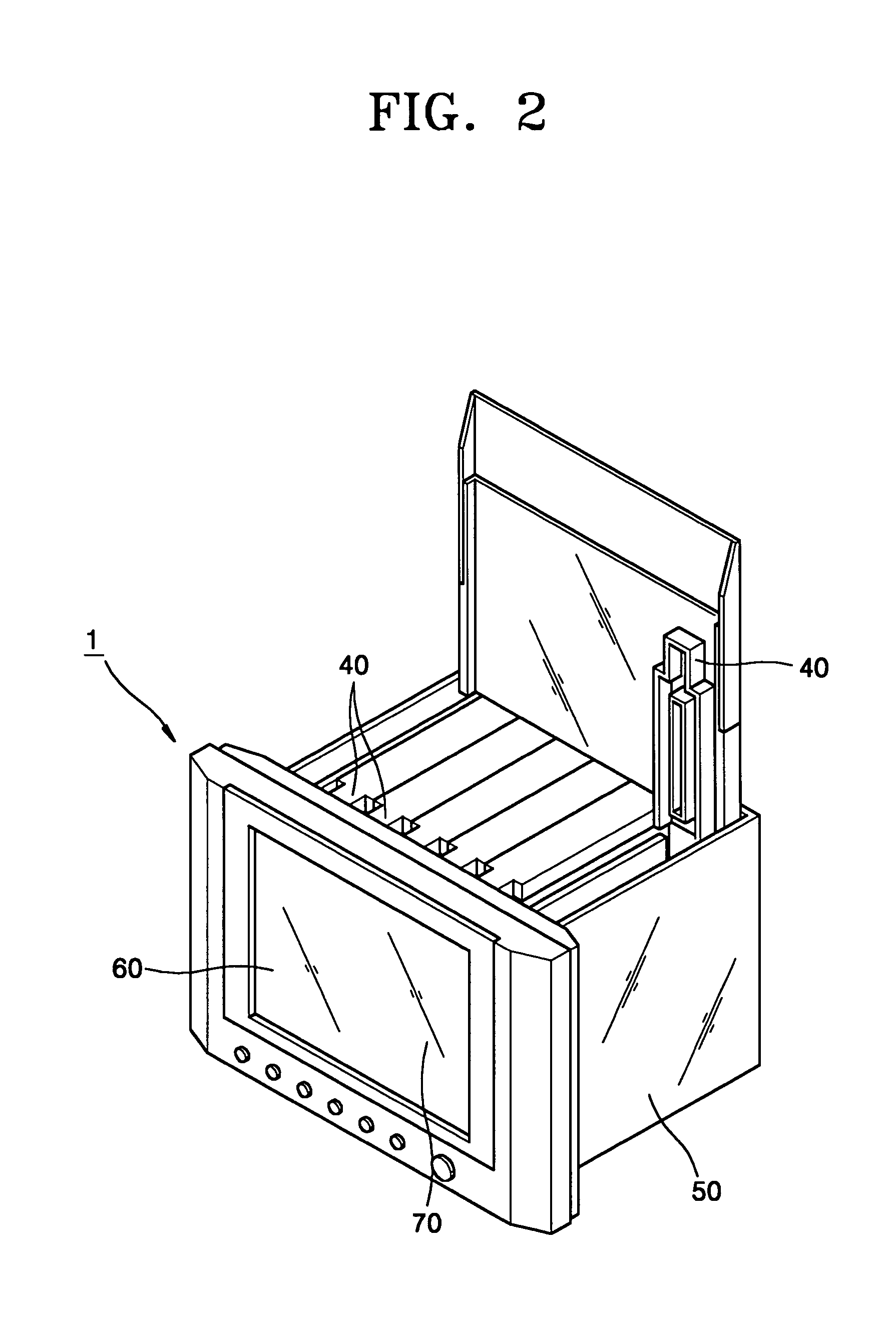Real-time PCR monitoring apparatus and method
a real-time pcr and monitoring apparatus technology, applied in the field of real-time polymerase chain reaction, can solve the problems of low success probability for accurate quantification, complex qc-pcr, inaccurate detection of dna amount, etc., and achieve the effect of improving the temperature transition ra
- Summary
- Abstract
- Description
- Claims
- Application Information
AI Technical Summary
Benefits of technology
Problems solved by technology
Method used
Image
Examples
example 1
Preparation of PCR Solution
[0056]To minimize difference between PCR experiments, other reagents except DNA samples were mixed to prepare a two-fold concentrated master mixture. Then, the master mixture was mixed with the DNA samples (1:1, by volume) to obtain a PCR solution.
[0057]The composition of the master mixture is as follows:
[0058]
PCR buffer1.0 μlDistilled water1.04 μl 10 mM dNTPs0.1 μl20 μM of each primer mixture0.2 μlEnzyme mixture0.16 μl
example 2
PCR on Microchips
[0059]To investigate the effect of a thermal transfer rate and a temperature ramping rate on PCR, PCR was carried out on micro PCR chips used in a real-time PCR monitoring apparatus of the present invention. The micro PCR chips used were made of silicon, and had advantages such as fast thermal transfer in reactants due to several hundreds times faster thermal conductivity than conventional PCR tubes, a fast temperature ramping rate, and maximal thermal transfer due to use of a trace of DNA samples.
[0060]1 μl of the PCR solution of Example 1 was loaded in each of the micro PCR chips, and a PCR cycle of 92° C. for 1 second and 63° C. for 15 seconds was then repeated for 40 times. The experimental resultants were quantified using Labchip (Agilent) and amplification was identified on a 2% TAE agarose gel.
[0061]FIG. 9 shows electrophoretic results on a 2% TAE agarose gel after the amplification. Here, 106 and 104 indicate the copy numbers of a HBV template, NTC (no templ...
example 3
Real-time PCR Monitoring Based on Signal Corresponding to Impedance Measured in PCR Product
[0064]In this Example, a signal emitted from a PCR solution (Promega) was measured in real time using the apparatus of FIG. 6. To minimize difference between PCR experiments, the PCR solution was prepared as follows: other reagents except DNA samples were mixed to prepare a two-fold concentrated master mixture and then the master mixture was mixed with the DNA samples (1:1, by volume) to obtain the PCR solution.
[0065]The composition of the master mixture is presented in Table 1 below.
[0066]
TABLE 1CompositionContentPCR bufferTris HCl10mMKCl50mMTriton X-1000.10%dNTPdATP200μMdCTP200μMdGTP200μMdUTP (dTTP)200μMPrimerUpstream1,000nMDownstream1,000nMTaq polymerase0.025U / μlMgCl21.5mM
[0067]The temperature and duration conditions for PCR were the same as those used in conventional PCR tubes as follows: 1 cycle of 50° C. for 120 seconds and 91° C. for 180 seconds; 1 cycle of 92° C. for 1 second and 63° C...
PUM
| Property | Measurement | Unit |
|---|---|---|
| temperature | aaaaa | aaaaa |
| temperature accuracy | aaaaa | aaaaa |
| temperature | aaaaa | aaaaa |
Abstract
Description
Claims
Application Information
 Login to View More
Login to View More - R&D
- Intellectual Property
- Life Sciences
- Materials
- Tech Scout
- Unparalleled Data Quality
- Higher Quality Content
- 60% Fewer Hallucinations
Browse by: Latest US Patents, China's latest patents, Technical Efficacy Thesaurus, Application Domain, Technology Topic, Popular Technical Reports.
© 2025 PatSnap. All rights reserved.Legal|Privacy policy|Modern Slavery Act Transparency Statement|Sitemap|About US| Contact US: help@patsnap.com



